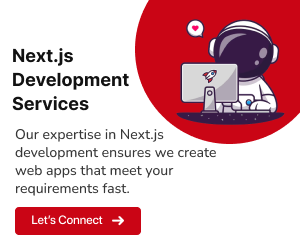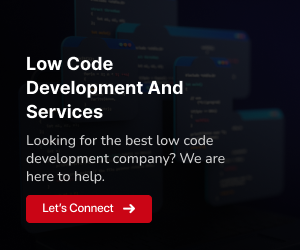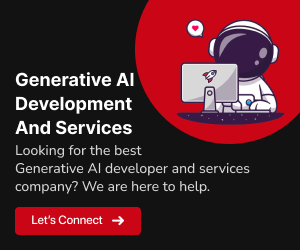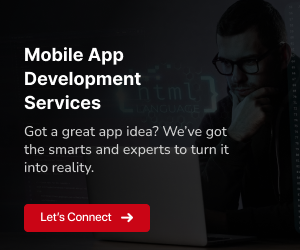Embracing Flutter in 2024: A Game Changer for Mobile App Developers
In 2024, Flutter emerged as the ultimate solution for iOS and Android app developers, reshaping the future of cross-platform mobile app development. With its versatile ability to create natively compiled applications for both platforms from a single codebase, Flutter offers unprecedented efficiency and adaptability. Its robust features, such as customizable widgets, reactive frameworks, and cohesive user experiences, streamline development, reducing time-to-market and costs. Flutter’s support for Material Design and Cupertino widgets ensures stunning, consistent interfaces, while state management options like Provider, Bloc, and MobX simplify complex app building. Discover how Flutter is revolutionizing the landscape for iOS and Android app developers in 2024.
Read more: Why Should Mobile App Startups Choose Flutter?
Flutter: Revolutionizing Cross-Platform App Development
Flutter is an open-source UI software development framework created by Google. It’s designed to help developers build natively compiled applications for mobile, web, and desktop from a single codebase. Flutter offers a rich set of pre-designed widgets and tools to create stunning, natively compiled applications for mobile, web, and desktop from a single codebase. It’s known for its exceptional performance, expressive and flexible UI, and rapid development capabilities.
A Brief History of Flutter:
Flutter’s journey began in 2015 when it was still in its experimental phase, known as “Sky.” However, it officially debuted as an open-source project in 2017 during the Dart Developer Summit. Since then, Flutter has experienced remarkable growth and adoption.
Release of Flutter 1.0 (December 2018):
Flutter 1.0 marked the first stable release, signaling Google’s confidence in the framework’s maturity and readiness for production use.
Expansion to Web (May 2020):
Google announced the availability of Flutter for web, allowing developers to target both mobile and web platforms with the same codebase.
Flutter 2.0 (March 2021):
With the release of Flutter 2.0, the framework expanded its capabilities to support desktop platforms (Windows, macOS, and Linux). This made Flutter a true cross-platform framework.
Growing Ecosystem (Ongoing):
Flutter’s ecosystem continues to thrive, with an ever-expanding library of packages and plugins contributed by the community. It has also gained popularity among developers and businesses worldwide.
Flutter Engage (March 2021):
Google hosted the first-ever Flutter Engage event, further highlighting the framework’s growth and adoption.
Today, Flutter is embraced by developers and organizations for its ability to streamline the app development process, deliver consistent and visually appealing user interfaces, and achieve excellent performance on various platforms. Its evolution and continued development make Flutter a compelling choice for modern app development needs.
Celebrating the Power of Flutter: Ideal for USA-Based Mobile App Development
Flutter has emerged as the go-to framework for mobile app development, and for good reason. Its versatility, cross-platform capabilities, and extensive library support make it an ideal choice for USA-based mobile app development projects. Whether you’re targeting Android or iOS or even both, Flutter’s single codebase approach streamlines the development process, reduces costs, and accelerates time-to-market. To dive deeper into why choosing Flutter for your mobile app project in the USA is a smart decision, read our blog: Choosing Flutter for Your USA-Based Mobile App Development Project
Flutter Unveiled: Revolutionizing App Development with Key Features
Flutter, developed by Google, is a powerful and versatile open-source UI framework that has gained popularity among iOS and Android app developers. Its key features make it an excellent choice for creating mobile apps:
Single Codebase
Flutter allows developers to write a single codebase that can be used for both iOS and Android platforms. This significantly reduces development time and effort, as there’s no need to maintain separate codebases for different platforms.
Hot Reload
One of the standout features of Flutter is its “Hot Reload” capability. Developers can instantly see the impact of code changes in the app’s interface, making the development process faster and more efficient.
Rich Widgets
Flutter offers a wide range of customizable and pre-built widgets, allowing developers to create stunning and complex user interfaces. These widgets follow the Material Design guidelines for Android and Cupertino design for iOS.
High Performance
Flutter’s graphics engine, Skia, ensures high-performance rendering. Apps built with Flutter are smooth and responsive, providing an excellent user experience.
Native-Like Performance
Flutter doesn’t rely on web-based components or a “bridge” to communicate with native modules. It compiles to native ARM code, resulting in near-native performance on both iOS and Android.
Rich Ecosystem
Flutter has a growing ecosystem of packages and plugins available through pub.dev. This allows developers to extend their app’s functionality and integrate with various services seamlessly.
These are just a few of the key features that make Flutter an attractive choice for iOS and Android app development. With its rapid development cycle, expressive UI, and powerful capabilities, it’s no wonder that more developers are choosing Flutter for their mobile app projects.
Unlocking the Advantages of Flutter for Android and iOS App Development
Flutter stands out as a remarkable choice for app developers, offering a multitude of advantages that significantly impact the development process and the final product. Dive deeper into the world of Flutter and discover the many advantages it brings:
Native-Like Performance
Flutter compiles to native ARM code, delivering exceptional performance that rivals natively developed applications. Users will appreciate the fluid and responsive experience your app provides. Flutter’s high-performance engine ensures that animations are smooth, transitions are seamless, and interactions feel natural.
Expressive UI Customization
Flutter’s extensive library of widgets empowers developers to craft customized, pixel-perfect user interfaces. Widgets are highly composable, allowing you to create complex and visually stunning designs. With full control over every pixel, you can bring your app’s unique personality to life and ensure it aligns perfectly with your brand.
Single Codebase, Dual Platforms
Write code once and deploy it to both Android and iOS platforms. Flutter’s cross-platform compatibility accelerates development and simplifies maintenance, reducing overall project costs. Your team can focus on enhancing features and user experience rather than managing separate codebases for each platform.
Hot Reload for Rapid Iteration
The Hot Reload feature empowers developers to make real-time code changes and instantly view the results. This iterative approach fosters rapid development, facilitates bug fixing, and promotes creative experimentation. Your development team can iterate quickly, fine-tuning the app’s UI, functionality, and performance with ease.
Thriving Open-Source Community
Flutter’s open-source nature encourages collaboration and knowledge sharing. A vibrant community of developers and enthusiasts contributes to a wealth of resources, plugins, and packages. Benefit from a supportive network of experts, readily available solutions, and an ever-evolving ecosystem of tools.
Cost-Efficient Development
Flutter’s single codebase approach minimizes development costs, making it an attractive option for startups and businesses seeking cost-effective solutions. With Flutter, you can maximize your return on investment while delivering high-quality cross-platform applications to your users.
Enhanced Development Productivity
The simplicity and responsiveness of Flutter’s UI system, combined with the Hot Reload feature, boost your development team’s productivity. Effortlessly iterate on app features, collaborate effectively, and achieve development milestones faster than ever before.
Unified UI and Brand Consistency
Flutter enables you to maintain a consistent brand image and user experience across multiple platforms. Design changes can be implemented consistently, ensuring a unified UI across Android and iOS devices. Consistency fosters trust and user satisfaction, vital components of a successful app.
Easy Learning Curve
Flutter’s simplicity and elegant API make it accessible to developers of varying skill levels. Learning resources, documentation, and a supportive community make it easy to get started. Even developers new to mobile app development can quickly become proficient with Flutter.
Seamless Integration with Native Code
Flutter offers a bridge for incorporating native code when necessary. This flexibility enables integration with platform-specific features and access to device capabilities. Developers can leverage native code and plugins while maintaining the benefits of a single codebase.
These advantages underscore why Flutter is at the forefront of Android and iOS app development. Whether you’re an individual developer or part of a large team, Flutter’s performance, productivity enhancements, and cross-platform capabilities empower you to create exceptional mobile applications.
Addressing Challenges in Flutter App Development
Building top-notch mobile applications with Flutter is a journey filled with innovation and creativity. However, it’s not without its challenges. To gain insights into the common hurdles faced by Flutter app developers in the USA and discover effective solutions to overcome them, we invite you to explore our comprehensive guide: Challenges Faced by Flutter App Developers in the USA and How to Overcome Them
In this blog, we delve into real-world issues and provide practical strategies to help you navigate the complexities of Flutter development, ensuring your projects run smoothly and successfully.
Navigating the Crossroads: Choosing the Right Cross-Platform Framework
When it comes to cross-platform app development, the choices can be overwhelming. To help you find your way through the maze of options, we’ve compiled valuable insights in these two articles:
React Native Vs Flutter: Choosing the Right Cross-Platform Framework
- Explore the strengths and weaknesses of React Native and Flutter.
- Understand which framework aligns better with your project goals.
- Make an informed decision for your next app development venture.
Kotlin Vs Flutter: The Battle for Cross-Platform Supremacy
- Witness the face-off between Kotlin and Flutter.
- Discover the capabilities and limitations of each.
- Decide which technology is poised to dominate the cross-platform arena.
Dive into these articles to equip yourself with the knowledge needed to make the best choice for your cross-platform app project.
Embrace the Flutter Revolution
As we approach 2024, the choice for Android and iOS app developers is clear: Flutter is the future. With its unparalleled combination of innovative features and a thriving community, Flutter offers a development experience like no other. Its ability to create beautiful, responsive, and high-performing apps for both major platforms simultaneously is a game-changer. The advantages of using Flutter are undeniable: faster development cycles, expressive UIs, and a single codebase that saves time and resources. Moreover, its adaptability for web and desktop applications ensures that your projects are future-proofed. Flutter has proven its worth, from startups to tech giants. It’s not just a trend; it’s a strategic decision that will redefine how mobile apps are developed. So, why wait? Embrace the Flutter revolution today and be part of the innovative future of mobile app development.



















